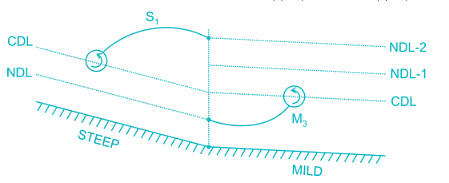Test: Fluid Mechanics- 1 - SSC JE MCQ
20 Questions MCQ Test - Test: Fluid Mechanics- 1
For Bernoulli’s equation to remain valid, which of the following is NOT required?
The hydraulic grade line for flow in a pipe of constant internal diameter ______.
| 1 Crore+ students have signed up on EduRev. Have you? Download the App |
In an orifice used for flow measurement, the coefficient of velocity is always:
The centre of pressure on inclined immersed surface remains valid for the centre of pressure on vertical immersed surface, if the angle (θ) at immersed surface with liquid surface is:
The mechanical efficiency of an impulse turbine is generally between:
Which of the following is CORRECT about the viscosity of gas?
Pressure of 200 kPa is equivalent to the head of z metre of liquid having relative density 1.59. The value of z (m) is _____.
A longitudinal rectangular surface is hanged into the water such that its top and bottom points are at depth of 1.5 m and 6.0 m respectively. The depth of center of pressure (m) from the top surface is _____.
The velocity potential which follow the equation of continuity is ________
The term alternate depths in open channel flow is used to designate the depths
If a thin plate is held parallel to fluid stream the pressure drag on it is:
Two pumps can operate independently at heads H1, H2 and discharges Q1, Q2, respectively. If the pumps are connected in parallel, then what are the resulting discharge (Q) and head (H)?
A centrifugal pump delivers a liquid when pressure rise in impeller is equal to _______
The most economical section of circular channel for maximum discharge is obtained when (Where, d is the diameter of circular section)
 is the equation to determine kinematic viscosity of liquids by
is the equation to determine kinematic viscosity of liquids by
A pump delivers water at a rate of 0.025 m3/s against a head of 30 m. If the overall efficiency of the pump is 75%, the power required by the pump is:
A streamlined body is defined as a body about which ________.



































